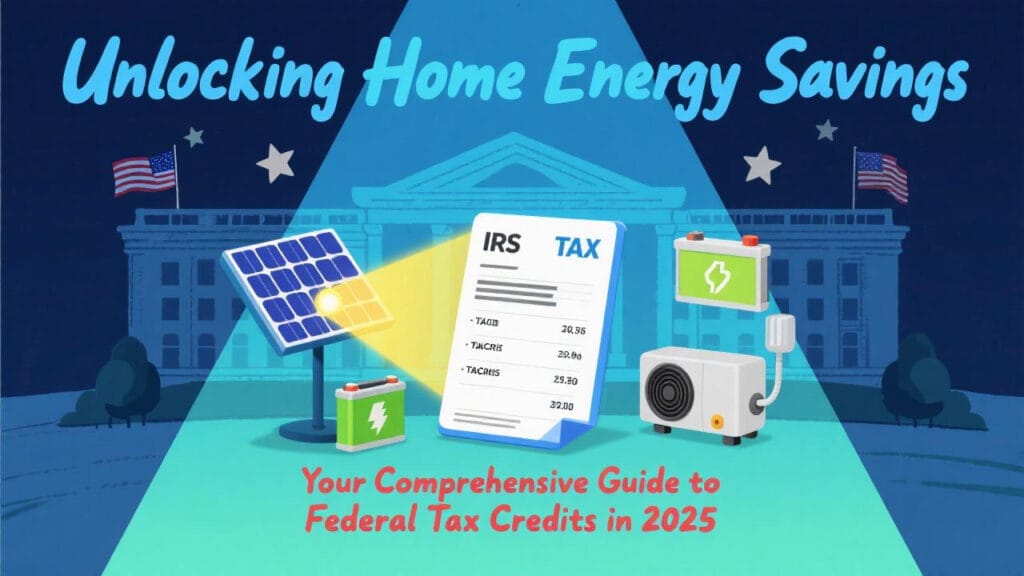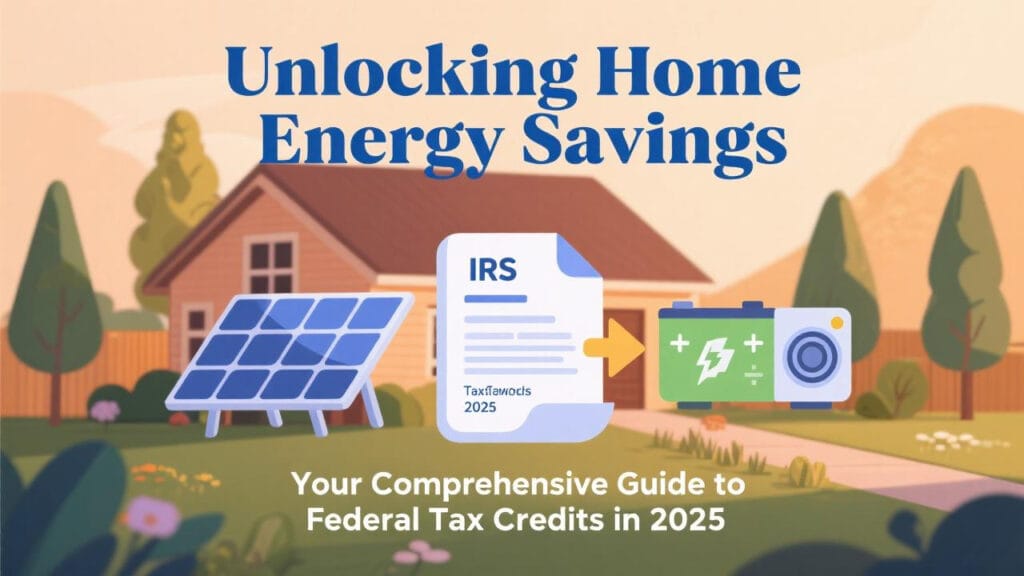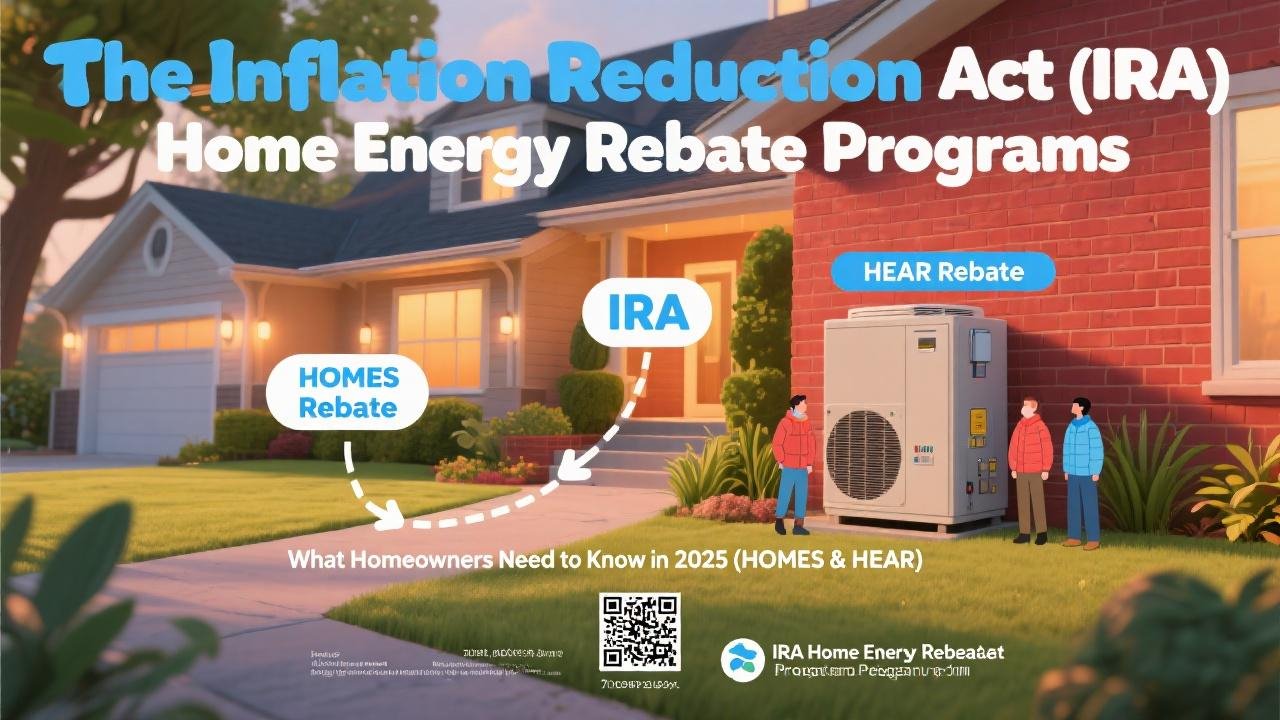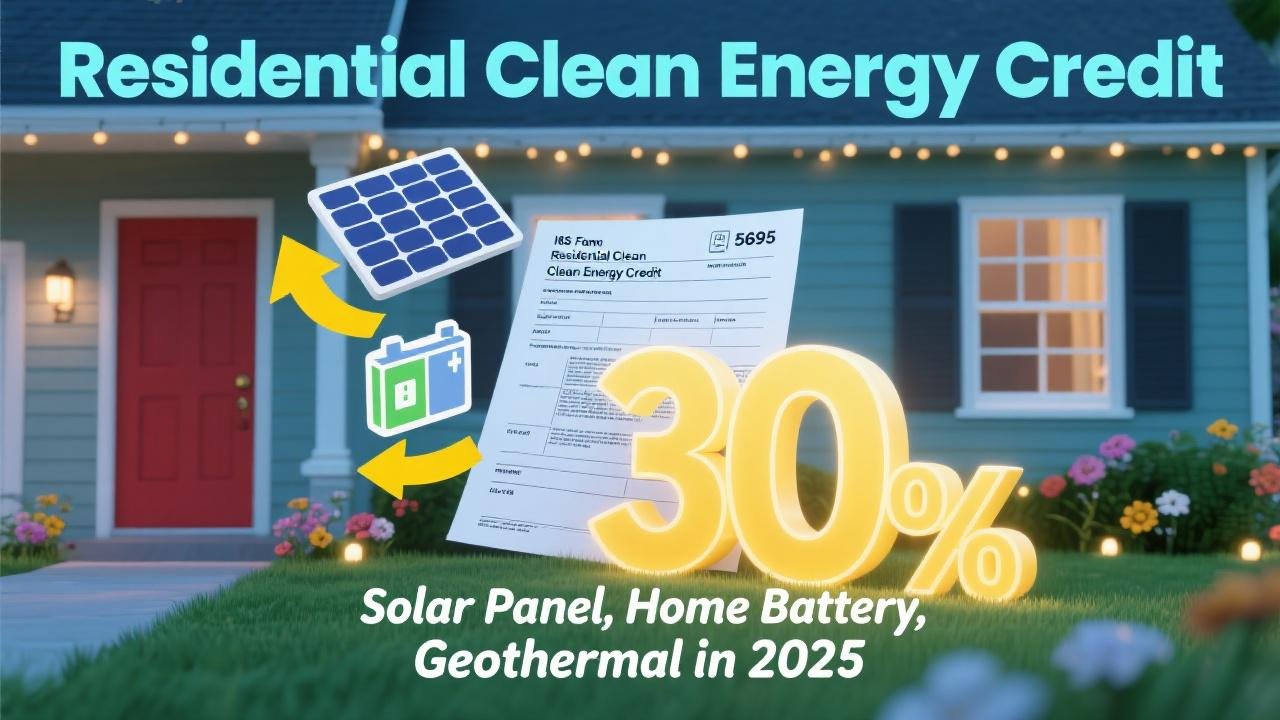Powering Your Home Upgrades with Government Support
Making your home more energy-efficient or investing in renewable energy systems like solar panels are smart moves that offer long-term savings and environmental benefits. In 2025, the U.S. Federal Government continues to provide significant financial incentives, primarily through tax credits established or enhanced by the Inflation Reduction Act (IRA), to encourage homeowners to adopt these clean energy solutions. Understanding these federal tax credits can dramatically reduce the upfront cost of your home energy projects, making them more accessible and accelerating your return on investment. This guide provides a comprehensive overview of the key federal tax credits available to homeowners in 2025.
Two Main Federal Tax Credits for Homeowners:
For residential properties, there are two primary federal tax credits to be aware of when planning energy upgrades:
- Residential Clean Energy Credit (Often called the Solar Tax Credit – IRS Form 5695, Part I): For investments in renewable energy systems.
- Energy Efficient Home Improvement Credit (IRS Form 5695, Part II): For making qualified energy-efficient improvements to your existing home.
Let’s break down each of these.

1. Residential Clean Energy Credit (IRS Form 5695, Part I)
This credit is designed for homeowners who install new, qualified clean energy property at their U.S. residence (primary or secondary, unless noted).
- Credit Amount: 30% of the total cost of new, qualified clean energy property installed anytime from 2022 through 2032. This percentage phases down to 26% in 2033 and 22% in 2034, unless Congress extends it.
- No Maximum Limit (Except for Fuel Cells): For most eligible technologies (solar, wind, geothermal, battery storage), there is no dollar cap on the 30% credit.
- Fuel Cell Exception: Limited to $500 for each half kilowatt (0.5 kW) of capacity.
- Eligible Property (New Equipment Only) :
- Solar Electric Panels (Photovoltaics – PV): For generating electricity.
- Solar Water Heaters: Must be certified by the Solar Rating Certification Corporation (SRCC) or a comparable entity endorsed by your state.
- Wind Turbines (Small): For generating electricity.
- Geothermal Heat Pumps: Must meet ENERGY STAR requirements in effect at the time of purchase.
- Battery Storage Technology (Beginning in 2023): Must have a capacity of at least 3 kilowatt-hours (kWh). Can be claimed even if added to an existing solar system.
- Fuel Cells:
- What Costs are Covered? :
- The cost of the new clean energy property itself.
- Labor costs for onsite preparation, assembly, or original installation.
- Piping or wiring to connect the system to the home.
- Sales tax applied to eligible expenses.
- Important Notes:
- The credit is nonrefundable, meaning it can reduce your tax liability to zero, but you won’t get any excess back as a refund. However, any unused credit can be carried forward to future tax years.
- You must own the system (not lease it or have a Power Purchase Agreement – PPA).
- The property must be installed at a home located in the United States.
- Utility rebates based on the cost of the property are generally subtracted from the system cost before calculating the 30% credit. State tax credits generally do not reduce the federal credit.
- How to Claim: File IRS Form 5695, “Residential Energy Credits,” with your annual federal tax return (Form 1040). Claim the credit for the tax year when the property is installed, not just purchased.
2. Energy Efficient Home Improvement Credit (IRS Form 5695, Part II)

This credit is for making qualified energy efficiency improvements to your existing primary residence in the U.S.
- Credit Amount: Generally 30% of the cost of qualified improvements, but with specific annual limits for different types of property.
- Annual Limits for 2025 :
- Overall Annual Limit: $3,200 total per year for all qualifying improvements combined.
- Specific Item Limits (within the $3,200 overall limit):
- Air Source Heat Pumps & Heat Pump Water Heaters: Up to $2,000 per year (this is a combined limit for these items plus biomass stoves/boilers).
- Exterior Windows and Skylights: Up to $600 per year (must meet ENERGY STAR Most Efficient criteria).
- Exterior Doors: Up to $250 per door, with a $500 total limit per year (must meet applicable ENERGY STAR requirements).
- Insulation and Air Sealing Materials/Systems: No specific dollar cap beyond the $1,200 general limit for these types of building envelope components (must meet relevant IECC standards).
- Electrical Panel Upgrades (to support new electric equipment): Up to $600 per year (must meet National Electric Code and have 200+ amp capacity).
- Home Energy Audits: Up to $150 per year (must be conducted by a qualified auditor and include a written report).
- Central Air Conditioners, Gas Furnaces, Boilers, etc.: Up to $600 for other specific energy property meeting certain efficiency standards.
- Eligibility Requirements for 2025:
- Improvements must be made to your primary residence (where you live most of the time).
- Equipment must be new, not used.
- Efficiency Standards: Most equipment must meet specific ENERGY STAR requirements. For example:
- Air-source heat pumps must be ENERGY STAR Most Efficient certified starting in 2025.
- Windows must meet ENERGY STAR Most Efficient criteria.
- Insulation and air sealing must meet relevant International Energy Conservation Code (IECC) standards.
- You will likely need a Product Identification Number (PIN) from the manufacturer for certain qualified equipment when filing.
- No Lifetime Limit: You can claim the maximum annual credit each year you make eligible improvements through 2032.
- How to Claim: File IRS Form 5695, “Residential Energy Credits,” Part II, with your annual federal tax return. Claim for the year the property is installed.
Maximizing Your Federal Tax Credits:
- Plan Your Projects: Since some credits have annual limits, you might consider staging larger projects over multiple years to maximize your claims. For example, you could install a qualifying heat pump one year (up to $2,000 credit) and new qualifying windows the next year (up to $600 credit).
- Keep Meticulous Records: Save all invoices, receipts, manufacturer certifications (showing ENERGY STAR compliance), and any required auditor reports.
- Consult a Tax Professional: Tax laws can be complex. If you have questions or a complicated situation, consult with a qualified tax advisor to ensure you’re claiming all eligible credits correctly.
A Powerful Incentive for a Greener Home
The federal tax credits available in 2025 offer a substantial financial incentive for homeowners to invest in energy efficiency and renewable energy. By understanding the Residential Clean Energy Credit and the Energy Efficient Home Improvement Credit, you can significantly reduce the net cost of upgrades like solar panels, battery storage, heat pumps, insulation, and efficient windows and doors. These incentives not only make your home more affordable to run and more comfortable but also contribute to a cleaner environment. Always check the latest IRS guidelines and consult with professionals to ensure you meet all eligibility requirements.



